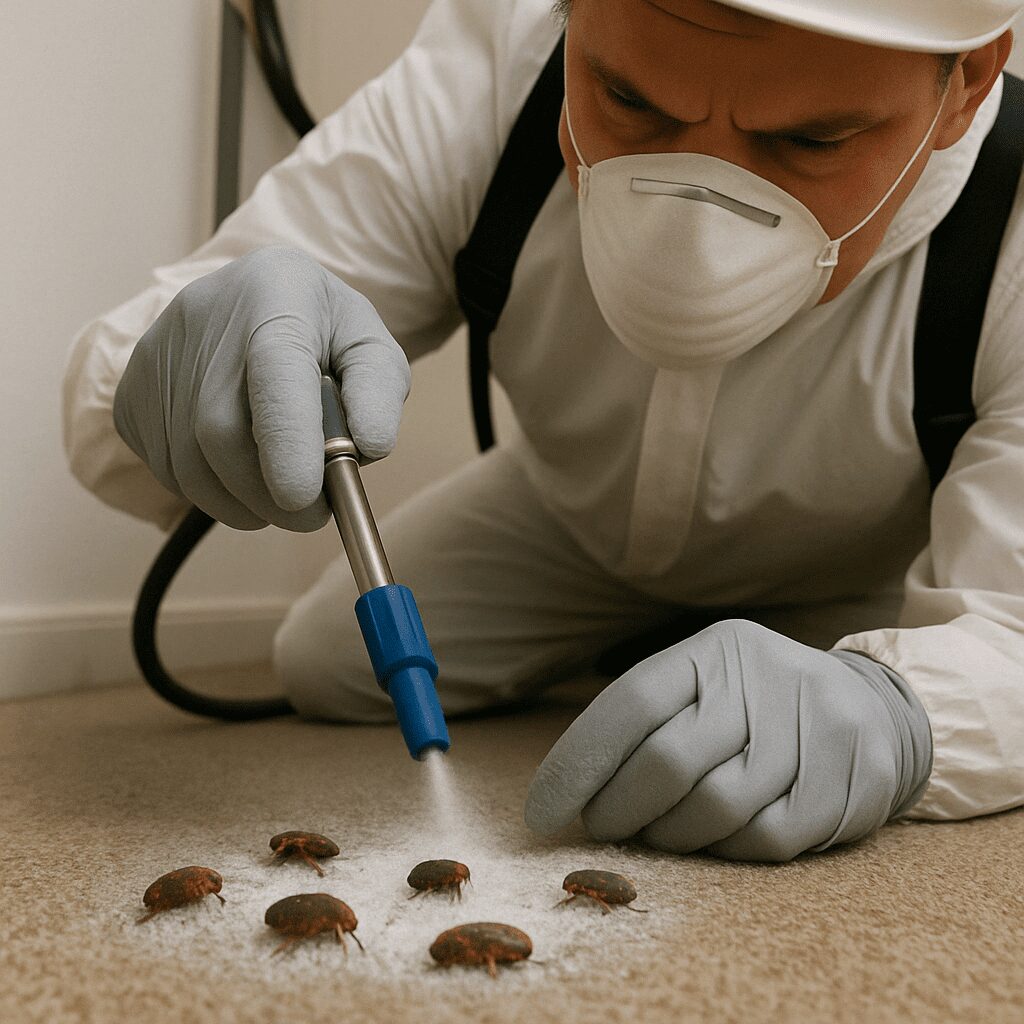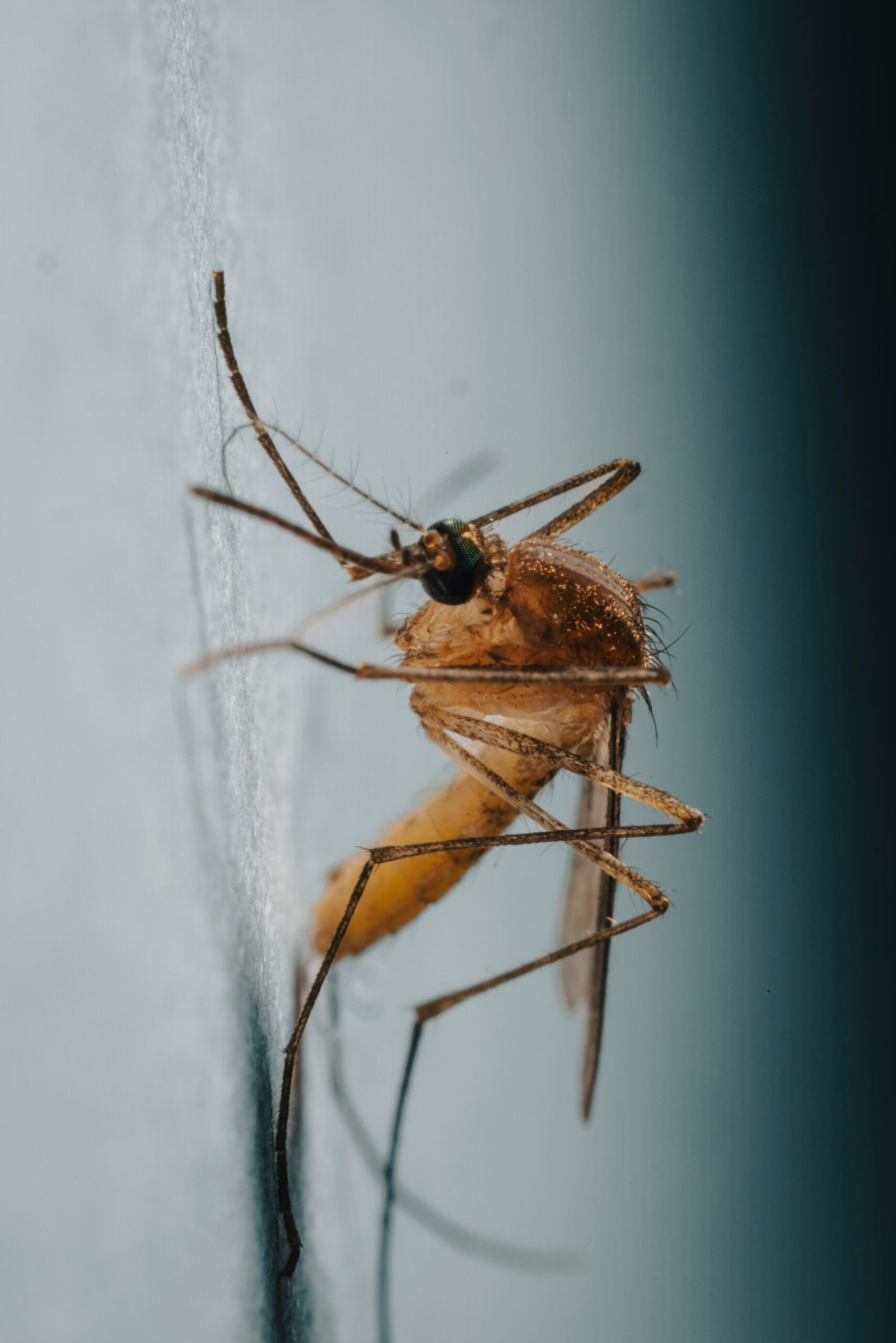Menu

Bees, wasps, and hornets can turn a peaceful yard into a danger zone—especially when nests are close to entrances, attics, or high-traffic areas. Their stings can cause pain, allergic reactions, and serious risk for children and pets. Touchdown Pest Control offers safe, effective removal of nests and swarms to protect your home and family.
Our licensed pest control experts use humane and eco-friendly methods to eliminate stinging insects without putting your household at risk. Whether it’s an aggressive wasp nest under your eaves or a swarm of bees in your shed, we’re equipped to handle it quickly and professionally.

Bees, wasps, and hornets typically build nests in eaves, trees, attics, sheds, and wall voids. To reduce the chances of stings or infestations, avoid disturbing nests and keep food and trash sealed when outdoors. Wearing light-colored clothing and avoiding perfumes can also reduce the likelihood of attracting them.
Inspect your home’s exterior regularly for small nests in early spring, when colonies begin to form. Early detection allows for quicker, safer removal before they expand. Avoid spraying nests yourself, especially if you are unsure about the species or are allergic to stings.
For best results, trust Touchdown Pest Control’s certified professionals to assess the situation and implement the safest removal solution possible—whether it's a honey bee relocation or hornet extermination. Our team ensures complete elimination with minimal risk to your household and property.

Fleas
Fleas aren’t just a nuisance—they pose serious health risks to both pets and people. These tiny parasites multiply quickly and can infest carpets, furniture, and bedding. Touchdown Pest Control offers…

WildLife Control
Wild animals like raccoons, squirrels, and opossums often invade attics, basements, and crawl spaces in search of shelter. Our humane wildlife control services focus on safe trapping, removal, and exclusion…

Mosquitos
Mosquitoes are more than annoying—they’re carriers of dangerous diseases like West Nile virus and Zika. Our mosquito control treatments reduce breeding sites, treat hotspots, and provide lasting protection for your…

Bees, Wasps & Hornets
Bees, wasps, and hornets can be aggressive and dangerous when nesting near homes or businesses. Our expert bee and wasp removal service ensures safe, humane, and thorough relocation or extermination…

Roaches
Cockroaches are resilient, fast breeders, and notorious for spreading bacteria and allergens. At Touchdown Pest Control, we tackle roach infestations with powerful treatments and preventative strategies.

Spiders
While most spiders are harmless and even beneficial in gardens, some species can pose serious health risks when found indoors. Touchdown Pest Control offers targeted spider removal and control services…

Bed Bugs
Bed bugs are notoriously difficult to eliminate without professional help. These tiny insects hide in cracks and crevices and come out at night to feed. Our bed bug removal services…

Rodents
Rodents like rats and mice are more than just a nuisance—they can cause severe property damage, contaminate food, and spread dangerous diseases. Our rodent control services are designed to quickly…

Bee, Wasp & Hornet Control and Safe Nest Removal
Stinging insects like bees, wasps, and hornets can pose serious health risks when they build nests near homes or public areas. Touchdown Pest Control offers professional stinging insect removal using safe, humane, and eco-conscious techniques. We eliminate active nests and help prevent reinfestation through targeted exclusion and preventative methods.
Bees, wasps, and hornets defend their nests aggressively when disturbed, leading to painful stings and even allergic reactions in sensitive individuals. While a single sting may cause mild discomfort, multiple stings or allergic responses can be dangerous. Children and pets are especially vulnerable when nests are located near doors, patios, or play areas. If you suspect an active nest, do not attempt removal—professional treatment ensures your safety and avoids provoking the colony.
Wasps and hornets are typically more aggressive than bees and are identifiable by their slender, elongated bodies and shiny, hairless appearance. Bees are generally more docile, rounder, and hairy, and may be seen pollinating flowers. Nests can vary—paper wasps build umbrella-shaped nests, hornets create large ball-shaped structures, and bees form waxy hives in sheltered areas.
Nests can appear under eaves, in attics, trees, walls, sheds, or even underground. Early detection is crucial. A small nest in spring can grow into a large, aggressive colony by summer. If buzzing activity increases or you spot a visible nest, avoid the area and call for professional help immediately.
Queen wasps and hornets start new nests each spring. As the colony grows, so does the risk of stings and aggressive behavior. Colonies may house hundreds to thousands of stinging insects by late summer. Without removal, these pests can return yearly or even expand into other parts of your property.
DIY nest removal can be extremely dangerous. Touchdown Pest Control uses protective equipment, specialized tools, and expert techniques to eliminate nests safely. Our treatments are designed to neutralize active colonies and prevent regrowth. Whether it's a beehive relocation or hornet extermination, we tailor our services to ensure complete safety and lasting protection.
Never attempt to spray or knock down a wasp or hornet nest yourself. If you notice heightened insect activity or a visible nest near your home, contact Touchdown Pest Control. Our expert team will assess the situation and safely remove the threat—giving you peace of mind and a sting-free property.